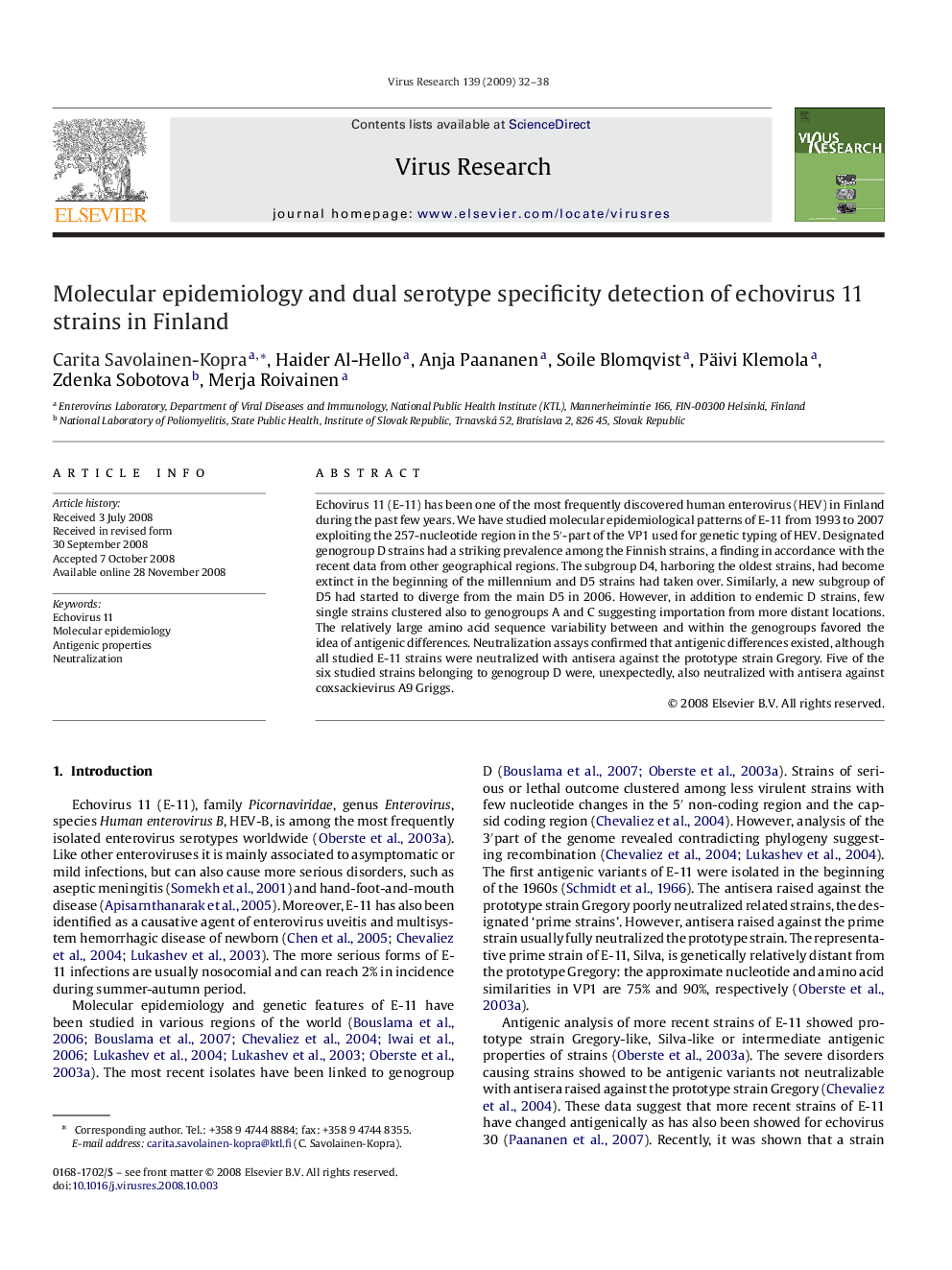| Article ID | Journal | Published Year | Pages | File Type |
|---|---|---|---|---|
| 3430210 | Virus Research | 2009 | 7 Pages |
SummaryEchovirus 11 (E-11) has been one of the most frequently discovered human enterovirus (HEV) in Finland during the past few years. We have studied molecular epidemiological patterns of E-11 from 1993 to 2007 exploiting the 257-nucleotide region in the 5′-part of the VP1 used for genetic typing of HEV. Designated genogroup D strains had a striking prevalence among the Finnish strains, a finding in accordance with the recent data from other geographical regions. The subgroup D4, harboring the oldest strains, had become extinct in the beginning of the millennium and D5 strains had taken over. Similarly, a new subgroup of D5 had started to diverge from the main D5 in 2006. However, in addition to endemic D strains, few single strains clustered also to genogroups A and C suggesting importation from more distant locations. The relatively large amino acid sequence variability between and within the genogroups favored the idea of antigenic differences. Neutralization assays confirmed that antigenic differences existed, although all studied E-11 strains were neutralized with antisera against the prototype strain Gregory. Five of the six studied strains belonging to genogroup D were, unexpectedly, also neutralized with antisera against coxsackievirus A9 Griggs.
